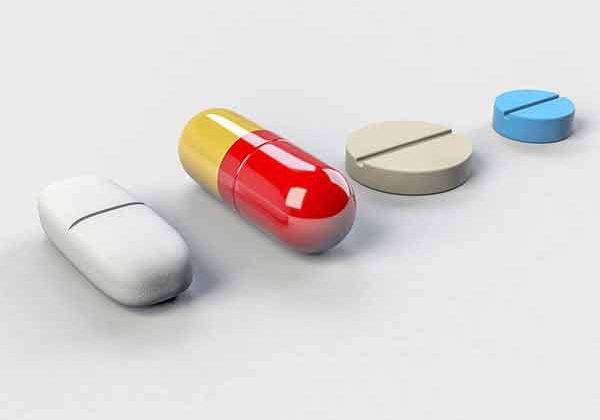Herbal medicine-Drug Interactions
by Everaldo Attard
In today’s Western world, herbal medicine is used alongside conventional medicine. Herbal medicines may interefere with conventional medicines by several mechanisms, the most typical being via cytochrome P450 and/or P-glycoprotein systems. The cytochrome P450 family (officially abbreviated as CYP) is a large and diverse group of enzymes (Table 1). P glycoproteins (P-gp) These mechanisms alter the plasma concentrations and/or alter the clearance of drugs, hence leading to a potentiated or diminished therapeutic effect. Most of the over-the-counter herbal medicines are relatively safe. However, the patients should be advised on the concurrent use of conventional and herbal medicines. Patients suffering from chronic conditions, such as hypertension and diabetes, are usually stabilised on a number of medications. The introduction of a herbal medicine unfortunately may destabilise the patient leading to episodes of hypo or hyperglycaemia in diabetic patients, and hypo- or hypertension in hypertensive patients, for instance.
The most utilised herbal medicines, with potential herb-drug interactions, include St. John’s wort, echinacea, garlic, ginkgo, ginseng, black pepper, kava, and goldenseal. In the context of this article, the herbs mentioned above will be discussed one by one on their potential interactive effects (Table 1).
| CYP or P-gp | St. John’s wort | Echinacea | Garlic | Ginkgo | Panax spp. | E. senticosus | Black pepper | Kava | Goldenseal | Substrate/s for CYP isoenzymes or glycoprotein | Activity |
| CYP1A2 | – | – | theophylline, caffeine | Metabolism | |||||||
| CYP2C9 | + | – | – | warfarin | Metabolism | ||||||
| CYP2C19 | + | + | antiepileptics, TCAs, NSAIDs, warfarin, omeprazole | Metabolism | |||||||
| CYP2D6 | – | – | warfarin | Metabolism | |||||||
| CYP2E1 | + | – | – | Chlorzoxazone, acetaminophen, theophylline, ethanol | Metabolism | ||||||
| CYP3A4 | + | – | + | – | – | – | – |
benzodiazepines, antivirals, oestrogens, anticonvulsants, imatinib |
Bioavailability and Metabolism | ||
| P-gp | + | – | – |
Tricyclic antidepressants, Cyclosporin, digoxin antiretrovirals, phenytoin, rifampin |
Transport |
Table 1: Interactions of some frequently used herbal medicines in Malta
St. John’s wort (Hypericum perforatum), also known as nature’s Prozac, is a broad spectrum P450 inducer and a p-glycoprotein inducer.1 St. John’s wort contains several phytochemicals, particularly flavonoids (such as quercetin, rutin and hyperoside), other phenylpropanoids, naphthodianthrones (hypericin), and acylphloroglucinols (hyperforin). Hyperforin is the most active constituent, increasing the gene expression of CYP3A4 isoenzyme through the pregnane X receptor activation, is also a potent competitive inhibitor of CYP3A4 and induces P-glycoprotein transport (cyclosporine and digoxin).
Echinacea purpurea L. preparations have been used in tradition as an antimicrobial and an immune-booster. It contains phenylpropanoids (cichoric acid, chlorogenic acid, echinacoside), flavonoids, unsaturated alkamides, polysaccharides and a trace amount of non-hepatotoxic pyrrolizidine alkaloids. Cichoric acid and the alkamides are primarily involved in the cytochrome P450 isoenzyme inhibition.
Garlic (Allium sativum L.) may be regarded both as food and medicine. However, it is medicinally used for the prevention of atherosclerosis and the control of hypercholesterolaemia. The main active constituents are the organosulphur compounds allicin, alliin, S-allyl cysteine and their derivatives. It has been reported that garlic intereferes with anticoagulant activity leading to a risk of bleeding in patients on warfarin. These sulphur compounds are also responsible for the inhibition of the CYP2E1 and the induction of the CYP3A4 isoenzyme.2
Ginkgo biloba leaf extracts are mainly used for the enhancement of memory and control of Alzheimer’s disease, peripheral vascular disease and tinnitus. The main active constituents in these extracts are the ginkgolides and bilobalides (diterpenic and sesquiterpenic lactones, respectively), flavonoids and ginkgolic acids (6-alkylsalicylic acids). The P-glycoprotein is inhibited by flavonoids but induced by terpenoids, pregnane X receptor is induced by terpenoid, while CYP3A4 is inhibited by flavonoids but induced by organic acids. The most significant activity is the induction of the CYP2C19 isoenzyme that affects the metabolism of several drugs.3 The terpenic lactones exhibit antiplatelet activity and are claimed to block the platelet-activating factor receptor.
There are several species classified as Ginseng. These include Korean/Asian ginseng (Panax ginseng), American ginseng (Panax quinquifolius) and Siberian ginseng (Eletherococcus senticosus) amongst others.2 Panax ginseng, which contains mainly ginsenosides, interacts with phenelzine. It has been shown that it inhibits the CYP2D6 isoenzyme. However, Panax ginseng and Panax quinquifolius (polysaccharides, mainly) inhibit CYP3A4 and P-glycoprotein. Eleutherococcus seniticosus, containing eleutherosides, inhibits CYP1A2 and CYP2C9 iso-enzymes with minimal effects on CYP2D6 and CYP3A4.
The two most significant Piper species are kava (Piper methysticum) and black pepper (Piper nigrum).4 Kava is a popular medicine for the treatment of anxiety. It contains kava lactones (kawain, methysticin, yangonin and their derivatives). Kava interferes with GABA receptors, hence benzodiazepines, and inhibits CYP2E1. Black pepper contains piperidine amides (mainly piperine, chavicine and piperetine). It inhibits CYP3A4 isoenzyme and the P-glycoprotein transporter.
Goldenseal (Hydrastis canadensis) is used as an antimicrobial and an immune-booster, as for Echinacea. The main active constituents are alkaloids (hydrastine andberberine). Goldenseal rhizome extract is one of the strongest CYP3A4 iso-enzyme inhibitor. However it also inhibits CYP2C9 and CYP2D6 iso-enzymes.4
As demonstrated in this article, herbal medicines may increase or decrease drug bioavailability through the P-glycoprotein or via the Cytochrome P450 iso-enzyme systems. In some instances, contradictory activities have been established. This is because the quality of constituents and their quantity, affect which mechanism predominates in a particular situation. Therefore, herbal medicines should be evaluated on a case by case basis.
References
- Henderson L, Yue QY, Bergquist C, Gerden B and Arlett P. St John’s wort (Hypericum perforatum): drug interactions and clinical outcomes. Br J Clin Pharmacol 2002; 54:349-56.
- Izzo AA, Ernst E. Interactions between herbal medicines and prescribed drugs: a systematic review. Drugs 2009; 69:1777-98.
- Hu Z, Yang X, Ho PC et al. Herb-drug interactions: a literature review. Drugs 2005; 65:1239-82.
- Chen J, Raymond K. The role of CYP3A4 and p-glycoprotein in food-drug and herb-drug interactions. Australian Pharmacist 2006; 25:732-8.




